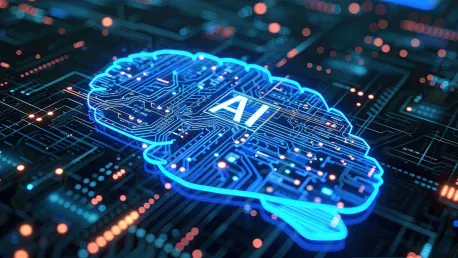The rapid expansion of Artificial Intelligence (AI) in educational settings has brought both opportunities and challenges. While AI has the potential to revolutionize education by enhancing administrative efficiency and personalized learning, its uneven deployment across classrooms has exacerbated the digital divide. This article explores the critical role of comprehensive teacher training in promoting equitable access to AI in education.
The Growing Digital Divide in AI Adoption
The integration of AI in classrooms has been uneven, with well-resourced schools adopting advanced AI tools at a much faster rate than under-resourced schools. This disparity has intensified existing educational inequities, leaving students in less affluent areas at a disadvantage. Wealthier schools benefit from AI’s capabilities, such as automating administrative tasks and providing personalized learning experiences, while underprivileged schools struggle to keep up.
The digital divide in AI adoption is not just about access to technology but also about the quality of education that students receive. In affluent schools, AI can help teachers save time on administrative tasks, allowing them to focus more on student engagement and instruction. On the other hand, schools in impoverished regions often lack the necessary infrastructure and resources to implement AI effectively, further widening the gap between students from different socioeconomic backgrounds. This growing digital divide presents a significant challenge in ensuring that all students have equal opportunities to succeed in an AI-driven future.
Another contributing factor to the digital divide is the lack of strategic policies and leadership supporting AI integration in under-resourced schools. Many districts face challenges in securing funding for AI tools and training, making it difficult for these schools to keep pace with their wealthier counterparts. Additionally, there is a pressing need for clear guidelines and support from state and educational authorities to help schools navigate the complexities of AI adoption. By addressing these issues, educational leaders can work towards bridging the gap and promoting equitable access to AI technologies in classrooms.
The Impact of AI on Educational Efficiency and Personalized Learning
AI has the potential to transform education by improving administrative efficiency and enabling personalized learning. By automating tasks such as lesson planning, assignment grading, and parent communication, AI allows teachers to dedicate more time to direct student interaction and support. This shift can lead to more effective teaching and improved student outcomes. The use of AI in administrative tasks reduces the workload on teachers, enabling them to focus on creating engaging and meaningful learning experiences for their students. In turn, this can lead to increased student engagement, better understanding of the material, and ultimately, higher academic achievement.
Personalized learning is another significant benefit of AI in education. AI-driven tools can analyze student data to identify individual learning needs and tailor instruction accordingly. This approach can help high achievers deepen their understanding and provide additional support to students who may be struggling. Personalized learning can foster a more inclusive and supportive learning environment, where each student’s unique needs are addressed. However, the benefits of personalized learning are not evenly distributed, as under-resourced schools often lack access to these advanced tools. This discrepancy highlights the importance of ensuring that all students, regardless of their background, have access to AI technologies that can enhance their learning experiences.
The effective implementation of personalized learning through AI requires comprehensive teacher training. Educators must be equipped with the skills and knowledge needed to utilize AI tools effectively and responsibly. This includes understanding how to interpret student data, design personalized learning plans, and integrate AI-driven instruction into their teaching practices. By investing in professional development, schools can empower teachers to harness the full potential of AI in education, ultimately leading to improved student outcomes and a more equitable learning environment.
Parental Perception and the Urgency of AI Integration
Many parents recognize the importance of AI in their children’s futures, increasing the urgency to integrate AI into education effectively. Parents understand that AI skills will be crucial for future careers, and they want their children to be well-prepared. This awareness has led to growing pressure on schools to adopt AI technologies and ensure that all students have access to these tools. As parents become more informed about the potential benefits of AI, they are advocating for schools to take action and prioritize AI integration as part of their educational strategies.
Despite this recognition, the effective deployment of AI in schools is hindered by inconsistent access to tools and training, particularly in under-resourced areas. Current research indicates that many teachers remain untrained in AI, and districts often lack explicit policies to support its integration. This gap in training and policy development further exacerbates the digital divide, making it essential to address these issues to promote equitable AI access. Schools must prioritize professional development for teachers to ensure that they are equipped with the necessary skills to utilize AI technologies effectively and responsibly.
In addition to professional development, there is a need for collaboration between schools, parents, and communities to support AI integration. Schools should engage parents in the process by providing information and resources about AI technologies and their potential benefits. By fostering a collaborative approach, schools can create a supportive environment where parents, educators, and students work together towards the common goal of enhancing learning experiences through AI. This collective effort can help to address the challenges associated with AI adoption and promote a more equitable and inclusive educational landscape.
The Ethical and Responsible Use of AI in Education
While AI holds promise for equipping students with future-ready skills, it is paramount that students also learn to use it responsibly and ethically. Knowledge of ethical AI usage, including combating algorithmic biases, ensures fair and inclusive applications. Educators must be trained to recognize and address these biases to promote fairness and transparency in AI use. Ethical considerations are crucial in developing AI policies and practices in schools. By emphasizing the importance of ethical AI usage, schools can create a learning environment where students are not only proficient in AI technologies but also aware of their potential impact on society.
Education leaders must establish clear guidelines for AI usage, balancing innovation with privacy and ethical considerations. This approach will help create a conducive learning environment where students can benefit from AI technologies while being protected from potential risks. Implementing ethical AI practices involves addressing issues such as data privacy, algorithmic bias, and the potential for AI to reinforce existing inequalities. By developing comprehensive AI policies, schools can ensure that AI technologies are used responsibly and effectively, promoting a culture of ethical awareness and accountability.
In addition to policy development, ongoing professional development for educators is essential in promoting the ethical use of AI. Teachers must be equipped with the knowledge and skills needed to implement AI technologies in a manner that prioritizes student well-being and inclusivity. This includes understanding how to recognize and mitigate biases in AI algorithms, ensuring that AI-driven instruction is fair and equitable, and fostering a classroom environment where ethical considerations are openly discussed. By investing in professional learning, schools can empower educators to navigate the complexities of AI integration responsibly and ethically, ultimately promoting a more inclusive and supportive learning environment.
The Role of Policy Development and Leadership in AI Integration
Education leaders play a critical role in promoting equitable AI access by developing and implementing strategic policies. These policies should address the ethical use of AI, student privacy, and the need for professional development for educators. Clear guidelines and support from state and educational authorities can help schools navigate the complexities of AI integration. Leadership is essential in fostering a culture of innovation and experimentation with AI in education. School and district leaders must be proactive in seeking out resources and partnerships to support AI implementation.
By prioritizing AI training and development, leaders can ensure that all students have the opportunity to benefit from these advanced technologies. This includes establishing partnerships with organizations that specialize in AI and educational technologies, providing schools with access to the latest tools and best practices. Additionally, leaders must advocate for funding and resources to support AI integration, particularly in under-resourced schools. By taking a proactive approach, education leaders can create a more equitable educational landscape where all students have access to the benefits of AI.
In fostering a culture of innovation, it is crucial for leaders to encourage collaboration and communication among educators, parents, and the broader community. By creating an open dialogue about AI integration and its potential impact on education, leaders can build a shared understanding and commitment to promoting equitable access. This collaborative approach can help to address the challenges associated with AI adoption and ensure that all stakeholders are engaged in the process. By working together, educational leaders, teachers, and communities can create a supportive environment where AI technologies are used effectively and responsibly to enhance learning experiences for all students.
Overcoming Barriers to AI Adoption in Under-Resourced Schools
Schools in impoverished regions face significant barriers to AI adoption, including limited access to tools and professional development. Addressing these challenges requires a concerted effort to provide resources and support to under-resourced schools. Partnerships with organizations specializing in AI and educational technologies can play a vital role in bridging this gap. By collaborating with these organizations, schools can gain access to the latest AI tools, training programs, and best practices, helping to level the playing field for students in under-resourced areas.
Professional development for teachers is crucial in overcoming these barriers. Comprehensive AI training programs should be designed to equip educators with the skills and knowledge needed to integrate AI effectively into their instruction. This training should focus on ethical, inclusive, and effective AI use, ensuring that all students benefit from these technologies. By providing teachers with the necessary support and resources, schools can empower educators to utilize AI tools in a way that enhances learning experiences and promotes equity. This investment in professional learning is essential in creating a more inclusive educational environment where all students have the opportunity to succeed.
In addition to professional development, schools must also address the infrastructure challenges that hinder AI adoption in under-resourced areas. This includes securing funding for necessary technology upgrades, such as high-speed internet access and updated hardware. By addressing these infrastructure needs, schools can create a supportive environment where AI technologies can be implemented effectively. Furthermore, ongoing support and resources should be provided to ensure that educators and students can continue to benefit from AI tools over time. By taking a comprehensive approach to addressing these barriers, schools can work towards creating a more equitable educational landscape where all students have access to the benefits of AI.
The Critical Role of Professional Learning in Promoting AI Equity
The rapid expansion of Artificial Intelligence (AI) in the education sector has introduced both opportunities and challenges. AI holds the potential to revolutionize education by boosting administrative efficiency and enabling personalized learning experiences for students. However, its uneven deployment across different classrooms and schools has worsened the existing digital divide. Not all students and teachers have equal access to these advanced technologies, creating disparities in educational quality. This article delves into the critical importance of comprehensive teacher training to ensure equitable access to AI in education. Proper training programs are essential to equip educators with the skills and knowledge required to effectively integrate AI tools into their teaching methods. By prioritizing such training, schools can work towards closing the gap and providing all students with the benefits of AI-enhanced education. Addressing this issue is vital for fostering a more inclusive and fair educational landscape where every student has the opportunity to succeed.









